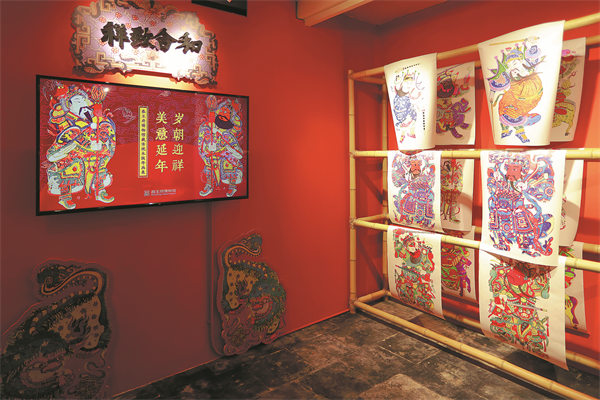

Speaking of the printing process, Huo is committed to honing his skills, saying the first challenge lies in achieving clear, consistent lines without smudging or damaging the delicate details.
This is especially important because the quality of the ink lines serves as the foundation for the entire painting, Huo explains.
Multiple layers of color need to be printed onto the same piece of paper. Each color layer must be perfectly aligned with the others, which requires great precision in positioning the paper and ensuring the alignment of the different printing plates. A slight misalignment can ruin the overall aesthetic and harmony of the piece, he notes.
His works are among more than 140 pieces carrying strong distinctive regional characteristics, including those from Tianjin, as well as Hebei, Jiangsu and Shandong provinces, almost all major historical production sites of the art form.
Many are rare examples dating back to the Qing Dynasty, with some being unique editions or one-of-a-kind prints that have never been seen by the public, says Xu Chen, curator of the painting exhibition.
Xu says those paintings were put together to give visitors a good taste of the distinctions of each region.
For example, works from Jiangsu highlight fine details, often achieved through five or six-color overprinting techniques, she explains.
In contrast, those from provinces like Shandong and Shaanxi and Hebei are known for their vibrant colors, strong contrasts, and bold, rough lines, she adds.
"As for Yangliuqing, it stands out for its refinement and elegance. Historically, it was favored by the royal courts and aristocracy during the Ming and Qing dynasties," Xu says.
The painting exhibition also features a New Yearthemed animated short film based on the museum's collection of traditional New Year woodblock paintings and a paint-rubbing experience for visitors.
Chen Xiaowen, deputy head of the museum, says the two exhibitions are efforts made so visitors can have a joyful and harmonious festival.
They can not only appreciate the charm of ancient architecture but also feel the allure of traditional Chinese culture.